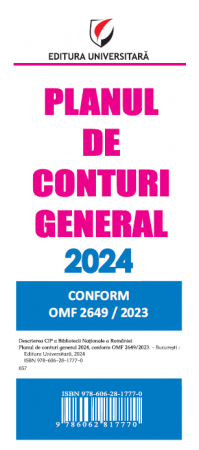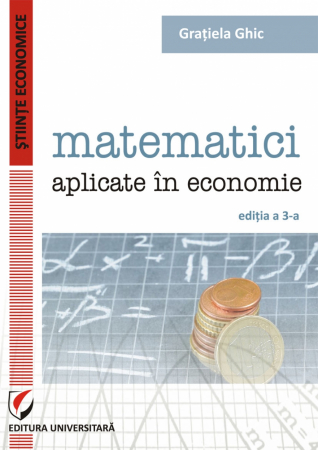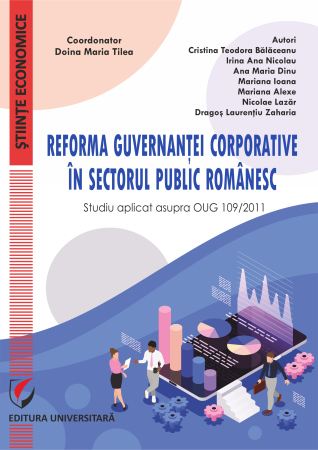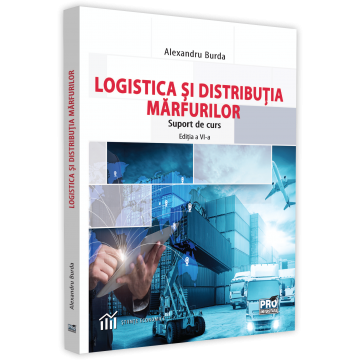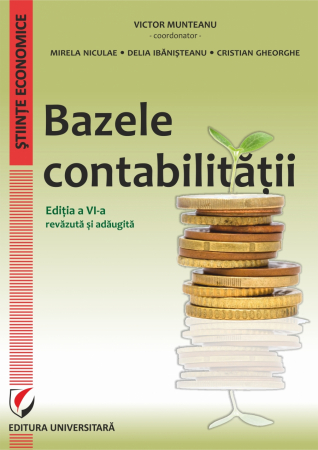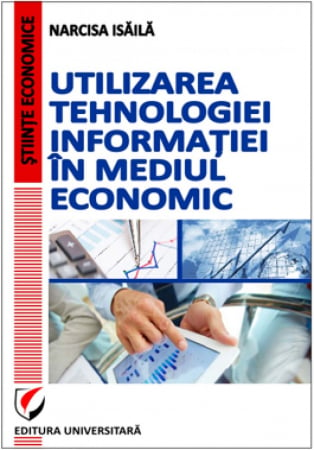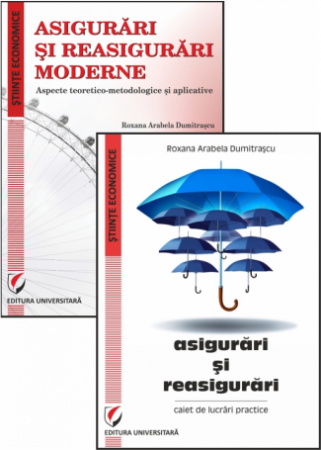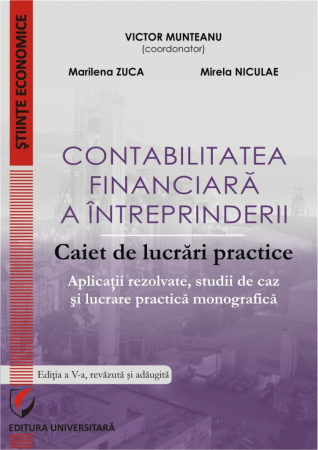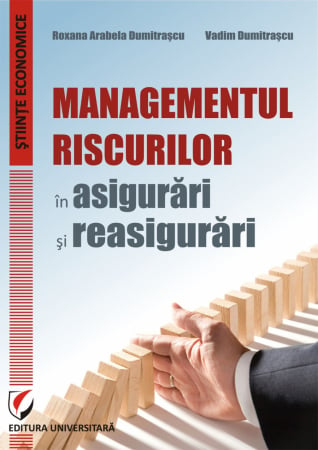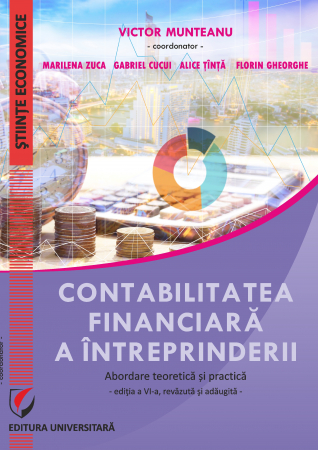Manuscript proposals: [email protected] / 0745 204 115 //// Tracking orders Individuals / Sales: 0745 200 357 / Orders Legal entities: 0721 722 783
Publisher: Editura Universitară
Author: Mihail Vincentiu Ivan, Emilian M. Dobrescu
ISBN: 978-606-28-0990-4
DOI: 10.5682/9786062809904
Publisher year: 2019
Pages: 226
Product Code:
9786062809904
Do you need help?
0745 200 357
- Description
- Download (1)
- Authors
- Content
- More details
- Reviews (0)
With the exception of the ideas that led to the application of new types of economy on the European continent (neoliberal, neoclassical, market social, experimental communist economy), we appreciate that the ideas aimed at European unification, had the greatest applicative impact on the evolution of European states. over the past century.
Prepared for a long time by the historical and political evolutions registered in the over 2000 years from the birth of Christ, the European integration took a special shape in the period after the Second World War.
We consider that the approaches regarding European integration, materialized in the last half of the century, are based on the numerous customs unions established between the European states, starting from the first half of the 19th century. The existence of these customs unions would not have been possible without the parallel process of the formation of independent European states (Italy, unified by Giuseppe Garibaldi in the mid-nineteenth century and the first German Reich in 1871, which unified the German states into a federation, are eloquent In this regard).
During a century of modern history, from the first decades of the nineteenth century until the First World War, the states of the "old continent" formed, according to their different interests, groups of economic and political influence. Relevant in this respect are the alliances of strong European states - Germany, the Habsburg Empire, Tsarist Russia, France, England, Italy, which led to the formation of the Triple Alliance and the Triple Understanding.
These two political unions played an important role in the historical evolutions determined by the results of the First and Second World Wars.
The coup d'etat of Germany and England, the Tsarist Empire (through the financial and logistical management of the establishment of communism in Russia), their centuries-old rival in structuring European architecture, in fact led, according to the domino principle, to the collapse of the Habsburg Empire to the USA).
Coming out of the First World War with a new geometry, dictated at Versailles by the victorious powers, Europe would experience, in the interwar period, a strong spiritual revival of ideas aimed at European unification. The Pan-European movement, born at the Congress of Political Science in Paris (1900), would theoretically be completed in the third decade of our century, in the reference works Paneurope, printed in 1927 by the Austrian count Richard N. Coudenhove-Kalergi and Europe , written by the Frenchman Eduard Herriot in 1930. Thus, based on the intense activity of the League of Nations, which tried to organize on a global scale "an eternal alliance for the consolidation of universal peace", the pioneers of European integration called for a "regional agreement" for "organizing cooperation political, economic and intellectual in Europe ”.
The project of the Federal States of Europe or the United States of Europe was presented with a remarkable vision by Coudenhove-Kalergi at the Pan-European Congress in Berlin (1930); the four chapters of the project referred to: the European Federation, the Obligations of the parties, the Bodies of the Federation and its Finances. The citizens of the Federation were called "European citizens", and the headquarters was to be established in a city that was not the capital of the country. The disputes between the states of the federation were judged by a body called the Federal Court, and those between the states of the federation and other states were to be submitted to the League of Nations or the Permanent Court of International Justice. National minorities would enjoy equal rights with the majority, allowing them the free exercise of language, schools, religion, and the press.
Trade treaties between the states of the federation had to be based on the principle of the most-favored-nation clause. How current these ideas are even today, some of them still insufficiently understood, accepted and applied in practice is shown by, for example, the discussions held in France in recent years on the free exercise of the language by minorities!
Then, more than now, Romania, through its intellectuals, was at the forefront of those who promoted ideas on European integration. Nicolae Iorga (in his work, The Small Balkan Countries and Imperialism, 1915), Vasile Parvan (Historical Ideas and Forms, 1921), Mihail Manoilescu (United States of Europe, 1929; Rationalization of Danubian Production and Trade, 1932; Solidarity of Eastern Europe, 1939), Vespasian V. Pella (European Federal Union, 1930), Dimitrie Gusti (Problem of the Federation of European States, 1930), Virgil Madgearu (Federalization of European States, 1930 and Economic Understanding of the Danube States, 1932) and VI Feraru (Danube Countries and the Tardieu Project, 1932 and the Draft Union of European States, 1935) and others, demonstrated abundantly the Romanian participation in the exchange of ideas aiming at European integration in a continental, but also regional (Danubian) context.
They still fascinate today, through their visionary spirit, the ideas of Dimitrie Gusti: “The Federation of European States is not a utopia, something fantastic, a fiction, an unattainable desideratum, but a necessary stage for an ongoing social evolution: as it happened from the communal federal forms, to the provincial and national ones, in the same way, in order to reach the planetary solidarity (the League of Nations), it will be necessary to create first the continental intermediate stage (the European Federation)”.
The idea of European integration, in its current form, was actually elaborated in the period between the two world wars of the last century, Romania being with the personalities mentioned above, in the first line of the thinkers who militated for European integration.
Prepared for a long time by the historical and political evolutions registered in the over 2000 years from the birth of Christ, the European integration took a special shape in the period after the Second World War.
We consider that the approaches regarding European integration, materialized in the last half of the century, are based on the numerous customs unions established between the European states, starting from the first half of the 19th century. The existence of these customs unions would not have been possible without the parallel process of the formation of independent European states (Italy, unified by Giuseppe Garibaldi in the mid-nineteenth century and the first German Reich in 1871, which unified the German states into a federation, are eloquent In this regard).
During a century of modern history, from the first decades of the nineteenth century until the First World War, the states of the "old continent" formed, according to their different interests, groups of economic and political influence. Relevant in this respect are the alliances of strong European states - Germany, the Habsburg Empire, Tsarist Russia, France, England, Italy, which led to the formation of the Triple Alliance and the Triple Understanding.
These two political unions played an important role in the historical evolutions determined by the results of the First and Second World Wars.
The coup d'etat of Germany and England, the Tsarist Empire (through the financial and logistical management of the establishment of communism in Russia), their centuries-old rival in structuring European architecture, in fact led, according to the domino principle, to the collapse of the Habsburg Empire to the USA).
Coming out of the First World War with a new geometry, dictated at Versailles by the victorious powers, Europe would experience, in the interwar period, a strong spiritual revival of ideas aimed at European unification. The Pan-European movement, born at the Congress of Political Science in Paris (1900), would theoretically be completed in the third decade of our century, in the reference works Paneurope, printed in 1927 by the Austrian count Richard N. Coudenhove-Kalergi and Europe , written by the Frenchman Eduard Herriot in 1930. Thus, based on the intense activity of the League of Nations, which tried to organize on a global scale "an eternal alliance for the consolidation of universal peace", the pioneers of European integration called for a "regional agreement" for "organizing cooperation political, economic and intellectual in Europe ”.
The project of the Federal States of Europe or the United States of Europe was presented with a remarkable vision by Coudenhove-Kalergi at the Pan-European Congress in Berlin (1930); the four chapters of the project referred to: the European Federation, the Obligations of the parties, the Bodies of the Federation and its Finances. The citizens of the Federation were called "European citizens", and the headquarters was to be established in a city that was not the capital of the country. The disputes between the states of the federation were judged by a body called the Federal Court, and those between the states of the federation and other states were to be submitted to the League of Nations or the Permanent Court of International Justice. National minorities would enjoy equal rights with the majority, allowing them the free exercise of language, schools, religion, and the press.
Trade treaties between the states of the federation had to be based on the principle of the most-favored-nation clause. How current these ideas are even today, some of them still insufficiently understood, accepted and applied in practice is shown by, for example, the discussions held in France in recent years on the free exercise of the language by minorities!
Then, more than now, Romania, through its intellectuals, was at the forefront of those who promoted ideas on European integration. Nicolae Iorga (in his work, The Small Balkan Countries and Imperialism, 1915), Vasile Parvan (Historical Ideas and Forms, 1921), Mihail Manoilescu (United States of Europe, 1929; Rationalization of Danubian Production and Trade, 1932; Solidarity of Eastern Europe, 1939), Vespasian V. Pella (European Federal Union, 1930), Dimitrie Gusti (Problem of the Federation of European States, 1930), Virgil Madgearu (Federalization of European States, 1930 and Economic Understanding of the Danube States, 1932) and VI Feraru (Danube Countries and the Tardieu Project, 1932 and the Draft Union of European States, 1935) and others, demonstrated abundantly the Romanian participation in the exchange of ideas aiming at European integration in a continental, but also regional (Danubian) context.
They still fascinate today, through their visionary spirit, the ideas of Dimitrie Gusti: “The Federation of European States is not a utopia, something fantastic, a fiction, an unattainable desideratum, but a necessary stage for an ongoing social evolution: as it happened from the communal federal forms, to the provincial and national ones, in the same way, in order to reach the planetary solidarity (the League of Nations), it will be necessary to create first the continental intermediate stage (the European Federation)”.
The idea of European integration, in its current form, was actually elaborated in the period between the two world wars of the last century, Romania being with the personalities mentioned above, in the first line of the thinkers who militated for European integration.
-
EUROPENIZAREA. PROCESE SI TENDINTE IN DEZVOLTAREA EUROPEANA
Download
EMILIAN M. DOBRESCU
MIHAIL VICENTIU IVAN
MIHAIL VICENTIU IVAN
INTRODUCTION / 9
Approaches regarding European integration / 9
Overturning Stratfor forecasts for Europe / 12
Three quarters of a century of European construction / 17
2 euro / 20 coin
The European Union is 50 years old: the signal of a new beginning / 23
ENVIRONMENTAL POLICIES / 25
Eco - label / 32
The economic brand of the European Union / 32
Standardization of food labeling in the European Union / 35
The use of the ecological label in Romania / 39
Waste recycling / 41
Emissions trading system for air traffic / 44
Three European environmental directives / 46
Landfill Greening Directive / 46
Air Quality Directive / 49
Directive on the energy independence of buildings / 51
DEMOGRAPHIC AND SOCIAL POLICIES / 55
Wealth of families in EU / 57 member countries
European citizenship / 59
Free movement of European citizens / 61
Community program "Promoting active European citizenship" / 62
Fundamental rights of Europeans / 64
The rights of European citizens / 64
Education for European citizenship / 68
European citizens' initiatives / 69
Measures for the Renewed Social Agenda / 70
First report on citizenship in the EU / 72
European social dialogue / 74
Birth rates / 78
Border porosity and some of its effects / 79
The demographic problem of the European Union / 91
Trends in European demographic "norms" / 97
ECONOMIC AND FINANCIAL POLICIES / 100
State aid / 100
State aid rules / 108
Simplification and flexibility / 110
State aid - the socialist form of support for EU / 113 enterprises
Small and Medium Enterprises (SMEs) / 117
Liberalization of services / 120
Attitudes of European politicians / 128
Action plan in the field of financial services / 130
Junker Investment Plan / 133
European Strategic Investment Fund (EFSI) / 135
The first 4 projects for the Juncker Plan / 136
Competition policy / 137
The rebirth of European industry / 142
European Economic Area (EEA) / 146
COMMON FOREIGN AND SECURITY POLICIES / 150
European Council on External Relations / 150
Safeguard clause / 153
Balkan Cooperation / 157
Asylum, migration and refugees in the Balkans / 158
Bosnia and Herzegovina: EU / 160 Stabilization and Association Agreement
Building new trade relations / 161
Intensifying regional cooperation in the Balkans / 164
EU relations with Russia. Level 2015/166
Mediterranean Union - founding agreement / 168
JUSTICE AND HOME AFFAIRS POLICIES / 169
The acquis communautaire / 169
The Single European Sky / 177
Reliable European standards / 179
Respect for human rights in Europe / 181
European Social Charter / 182
European Convention on Human Rights / 185
European Convention for the Prevention of Torture and Inhuman or Degrading Treatment or Punishment / 191
European Committee for the Prevention of Torture (CPT) / 191
European Court of Human Rights / 193
Human rights reform in the European Union / 195
Three fundamental documents on human rights / 196
The situation of human rights and fundamental rights in the European Union / 198
CONCLUSIONS / 203
Controversial budget / 203
Compensation from airlines / 205
Krynica Economic Forum / 206
Confidence index in the Euro Zone economy / 208
INSTEX / 209
Japanization of the Eurozone / 212
New European Commission / 213
European cities with zero carbon emissions / 217
Diplomatic representatives in the Arab Gulf countries / 219
Structural Reform Support Service / 220
Banking Union and Euro Zone approved by Germany / 222
BIBLIOGRAPHY / 224
Approaches regarding European integration / 9
Overturning Stratfor forecasts for Europe / 12
Three quarters of a century of European construction / 17
2 euro / 20 coin
The European Union is 50 years old: the signal of a new beginning / 23
ENVIRONMENTAL POLICIES / 25
Eco - label / 32
The economic brand of the European Union / 32
Standardization of food labeling in the European Union / 35
The use of the ecological label in Romania / 39
Waste recycling / 41
Emissions trading system for air traffic / 44
Three European environmental directives / 46
Landfill Greening Directive / 46
Air Quality Directive / 49
Directive on the energy independence of buildings / 51
DEMOGRAPHIC AND SOCIAL POLICIES / 55
Wealth of families in EU / 57 member countries
European citizenship / 59
Free movement of European citizens / 61
Community program "Promoting active European citizenship" / 62
Fundamental rights of Europeans / 64
The rights of European citizens / 64
Education for European citizenship / 68
European citizens' initiatives / 69
Measures for the Renewed Social Agenda / 70
First report on citizenship in the EU / 72
European social dialogue / 74
Birth rates / 78
Border porosity and some of its effects / 79
The demographic problem of the European Union / 91
Trends in European demographic "norms" / 97
ECONOMIC AND FINANCIAL POLICIES / 100
State aid / 100
State aid rules / 108
Simplification and flexibility / 110
State aid - the socialist form of support for EU / 113 enterprises
Small and Medium Enterprises (SMEs) / 117
Liberalization of services / 120
Attitudes of European politicians / 128
Action plan in the field of financial services / 130
Junker Investment Plan / 133
European Strategic Investment Fund (EFSI) / 135
The first 4 projects for the Juncker Plan / 136
Competition policy / 137
The rebirth of European industry / 142
European Economic Area (EEA) / 146
COMMON FOREIGN AND SECURITY POLICIES / 150
European Council on External Relations / 150
Safeguard clause / 153
Balkan Cooperation / 157
Asylum, migration and refugees in the Balkans / 158
Bosnia and Herzegovina: EU / 160 Stabilization and Association Agreement
Building new trade relations / 161
Intensifying regional cooperation in the Balkans / 164
EU relations with Russia. Level 2015/166
Mediterranean Union - founding agreement / 168
JUSTICE AND HOME AFFAIRS POLICIES / 169
The acquis communautaire / 169
The Single European Sky / 177
Reliable European standards / 179
Respect for human rights in Europe / 181
European Social Charter / 182
European Convention on Human Rights / 185
European Convention for the Prevention of Torture and Inhuman or Degrading Treatment or Punishment / 191
European Committee for the Prevention of Torture (CPT) / 191
European Court of Human Rights / 193
Human rights reform in the European Union / 195
Three fundamental documents on human rights / 196
The situation of human rights and fundamental rights in the European Union / 198
CONCLUSIONS / 203
Controversial budget / 203
Compensation from airlines / 205
Krynica Economic Forum / 206
Confidence index in the Euro Zone economy / 208
INSTEX / 209
Japanization of the Eurozone / 212
New European Commission / 213
European cities with zero carbon emissions / 217
Diplomatic representatives in the Arab Gulf countries / 219
Structural Reform Support Service / 220
Banking Union and Euro Zone approved by Germany / 222
BIBLIOGRAPHY / 224
With the exception of the ideas that led to the application of new types of economy on the European continent (neoliberal, neoclassical, market social, experimental communist economy), we appreciate that the ideas aimed at European unification, had the greatest applicative impact on the evolution of European states. over the past century.
Prepared for a long time by the historical and political evolutions registered in the over 2000 years from the birth of Christ, the European integration took a special shape in the period after the Second World War.
We consider that the approaches regarding European integration, materialized in the last half of the century, are based on the numerous customs unions established between the European states, starting from the first half of the 19th century. The existence of these customs unions would not have been possible without the parallel process of the formation of independent European states (Italy, unified by Giuseppe Garibaldi in the mid-nineteenth century and the first German Reich in 1871, which unified the German states into a federation, are eloquent In this regard).
During a century of modern history, from the first decades of the nineteenth century until the First World War, the states of the "old continent" formed, according to their different interests, groups of economic and political influence. Relevant in this respect are the alliances of strong European states - Germany, the Habsburg Empire, Tsarist Russia, France, England, Italy, which led to the formation of the Triple Alliance and the Triple Understanding.
These two political unions played an important role in the historical evolutions determined by the results of the First and Second World Wars.
The coup d'etat of Germany and England, the Tsarist Empire (through the financial and logistical management of the establishment of communism in Russia), their centuries-old rival in structuring European architecture, in fact led, according to the domino principle, to the collapse of the Habsburg Empire to the USA).
Coming out of the First World War with a new geometry, dictated at Versailles by the victorious powers, Europe would experience, in the interwar period, a strong spiritual revival of ideas aimed at European unification. The Pan-European movement, born at the Congress of Political Science in Paris (1900), would theoretically be completed in the third decade of our century, in the reference works Paneurope, printed in 1927 by the Austrian count Richard N. Coudenhove-Kalergi and Europe , written by the Frenchman Eduard Herriot in 1930. Thus, based on the intense activity of the League of Nations, which tried to organize on a global scale "an eternal alliance for the consolidation of universal peace", the pioneers of European integration called for a "regional agreement" for "organizing cooperation political, economic and intellectual in Europe ”.
The project of the Federal States of Europe or the United States of Europe was presented with a remarkable vision by Coudenhove-Kalergi at the Pan-European Congress in Berlin (1930); the four chapters of the project referred to: the European Federation, the Obligations of the parties, the Bodies of the Federation and its Finances. The citizens of the Federation were called "European citizens", and the headquarters was to be established in a city that was not the capital of the country. The disputes between the states of the federation were judged by a body called the Federal Court, and those between the states of the federation and other states were to be submitted to the League of Nations or the Permanent Court of International Justice. National minorities would enjoy equal rights with the majority, allowing them the free exercise of language, schools, religion, and the press.
Trade treaties between the states of the federation had to be based on the principle of the most-favored-nation clause. How current these ideas are even today, some of them still insufficiently understood, accepted and applied in practice is shown by, for example, the discussions held in France in recent years on the free exercise of the language by minorities!
Then, more than now, Romania, through its intellectuals, was at the forefront of those who promoted ideas on European integration. Nicolae Iorga (in his work, The Small Balkan Countries and Imperialism, 1915), Vasile Parvan (Historical Ideas and Forms, 1921), Mihail Manoilescu (United States of Europe, 1929; Rationalization of Danubian Production and Trade, 1932; Solidarity of Eastern Europe, 1939), Vespasian V. Pella (European Federal Union, 1930), Dimitrie Gusti (Problem of the Federation of European States, 1930), Virgil Madgearu (Federalization of European States, 1930 and Economic Understanding of the Danube States, 1932) and VI Feraru (Danube Countries and the Tardieu Project, 1932 and the Draft Union of European States, 1935) and others, demonstrated abundantly the Romanian participation in the exchange of ideas aiming at European integration in a continental, but also regional (Danubian) context.
They still fascinate today, through their visionary spirit, the ideas of Dimitrie Gusti: “The Federation of European States is not a utopia, something fantastic, a fiction, an unattainable desideratum, but a necessary stage for an ongoing social evolution: as it happened from the communal federal forms, to the provincial and national ones, in the same way, in order to reach the planetary solidarity (the League of Nations), it will be necessary to create first the continental intermediate stage (the European Federation) ”.
The idea of European integration, in its current form, was actually elaborated in the period between the two world wars of the last century, Romania being with the personalities mentioned above, in the first line of the thinkers who militated for European integration.
Prepared for a long time by the historical and political evolutions registered in the over 2000 years from the birth of Christ, the European integration took a special shape in the period after the Second World War.
We consider that the approaches regarding European integration, materialized in the last half of the century, are based on the numerous customs unions established between the European states, starting from the first half of the 19th century. The existence of these customs unions would not have been possible without the parallel process of the formation of independent European states (Italy, unified by Giuseppe Garibaldi in the mid-nineteenth century and the first German Reich in 1871, which unified the German states into a federation, are eloquent In this regard).
During a century of modern history, from the first decades of the nineteenth century until the First World War, the states of the "old continent" formed, according to their different interests, groups of economic and political influence. Relevant in this respect are the alliances of strong European states - Germany, the Habsburg Empire, Tsarist Russia, France, England, Italy, which led to the formation of the Triple Alliance and the Triple Understanding.
These two political unions played an important role in the historical evolutions determined by the results of the First and Second World Wars.
The coup d'etat of Germany and England, the Tsarist Empire (through the financial and logistical management of the establishment of communism in Russia), their centuries-old rival in structuring European architecture, in fact led, according to the domino principle, to the collapse of the Habsburg Empire to the USA).
Coming out of the First World War with a new geometry, dictated at Versailles by the victorious powers, Europe would experience, in the interwar period, a strong spiritual revival of ideas aimed at European unification. The Pan-European movement, born at the Congress of Political Science in Paris (1900), would theoretically be completed in the third decade of our century, in the reference works Paneurope, printed in 1927 by the Austrian count Richard N. Coudenhove-Kalergi and Europe , written by the Frenchman Eduard Herriot in 1930. Thus, based on the intense activity of the League of Nations, which tried to organize on a global scale "an eternal alliance for the consolidation of universal peace", the pioneers of European integration called for a "regional agreement" for "organizing cooperation political, economic and intellectual in Europe ”.
The project of the Federal States of Europe or the United States of Europe was presented with a remarkable vision by Coudenhove-Kalergi at the Pan-European Congress in Berlin (1930); the four chapters of the project referred to: the European Federation, the Obligations of the parties, the Bodies of the Federation and its Finances. The citizens of the Federation were called "European citizens", and the headquarters was to be established in a city that was not the capital of the country. The disputes between the states of the federation were judged by a body called the Federal Court, and those between the states of the federation and other states were to be submitted to the League of Nations or the Permanent Court of International Justice. National minorities would enjoy equal rights with the majority, allowing them the free exercise of language, schools, religion, and the press.
Trade treaties between the states of the federation had to be based on the principle of the most-favored-nation clause. How current these ideas are even today, some of them still insufficiently understood, accepted and applied in practice is shown by, for example, the discussions held in France in recent years on the free exercise of the language by minorities!
Then, more than now, Romania, through its intellectuals, was at the forefront of those who promoted ideas on European integration. Nicolae Iorga (in his work, The Small Balkan Countries and Imperialism, 1915), Vasile Parvan (Historical Ideas and Forms, 1921), Mihail Manoilescu (United States of Europe, 1929; Rationalization of Danubian Production and Trade, 1932; Solidarity of Eastern Europe, 1939), Vespasian V. Pella (European Federal Union, 1930), Dimitrie Gusti (Problem of the Federation of European States, 1930), Virgil Madgearu (Federalization of European States, 1930 and Economic Understanding of the Danube States, 1932) and VI Feraru (Danube Countries and the Tardieu Project, 1932 and the Draft Union of European States, 1935) and others, demonstrated abundantly the Romanian participation in the exchange of ideas aiming at European integration in a continental, but also regional (Danubian) context.
They still fascinate today, through their visionary spirit, the ideas of Dimitrie Gusti: “The Federation of European States is not a utopia, something fantastic, a fiction, an unattainable desideratum, but a necessary stage for an ongoing social evolution: as it happened from the communal federal forms, to the provincial and national ones, in the same way, in order to reach the planetary solidarity (the League of Nations), it will be necessary to create first the continental intermediate stage (the European Federation) ”.
The idea of European integration, in its current form, was actually elaborated in the period between the two world wars of the last century, Romania being with the personalities mentioned above, in the first line of the thinkers who militated for European integration.
If you want to express your opinion about this product you can add a review.
write a review

6359.png)
![Europeanization. Processes and Trends in European Development [1] Europeanization. Processes and Trends in European Development [1]](https://gomagcdn.ro/domains/editurauniversitara.ro/files/product/large/europenizarea-procese-si-tendinte-in-dezvoltarea-europeana-76-3659.jpg)
